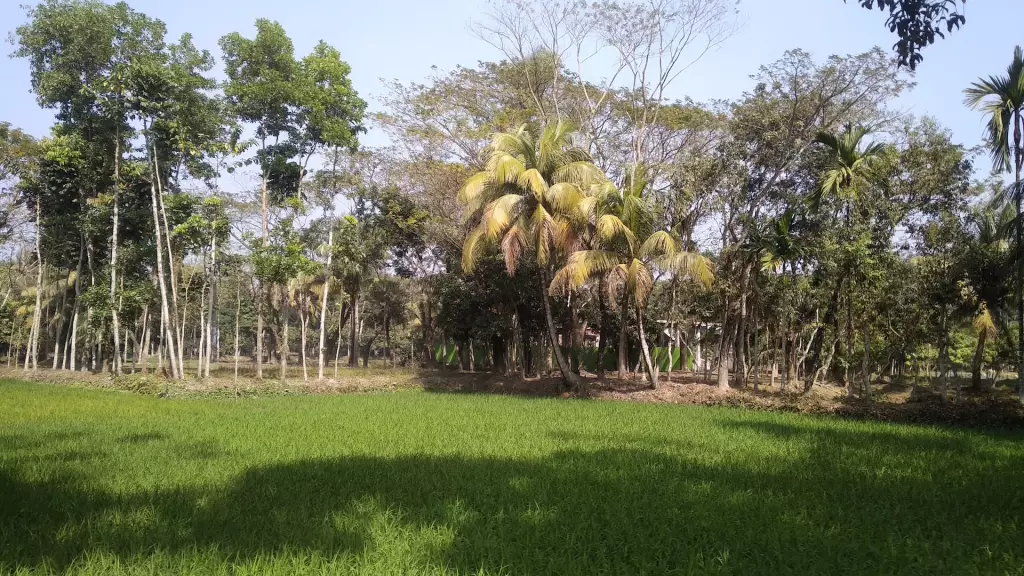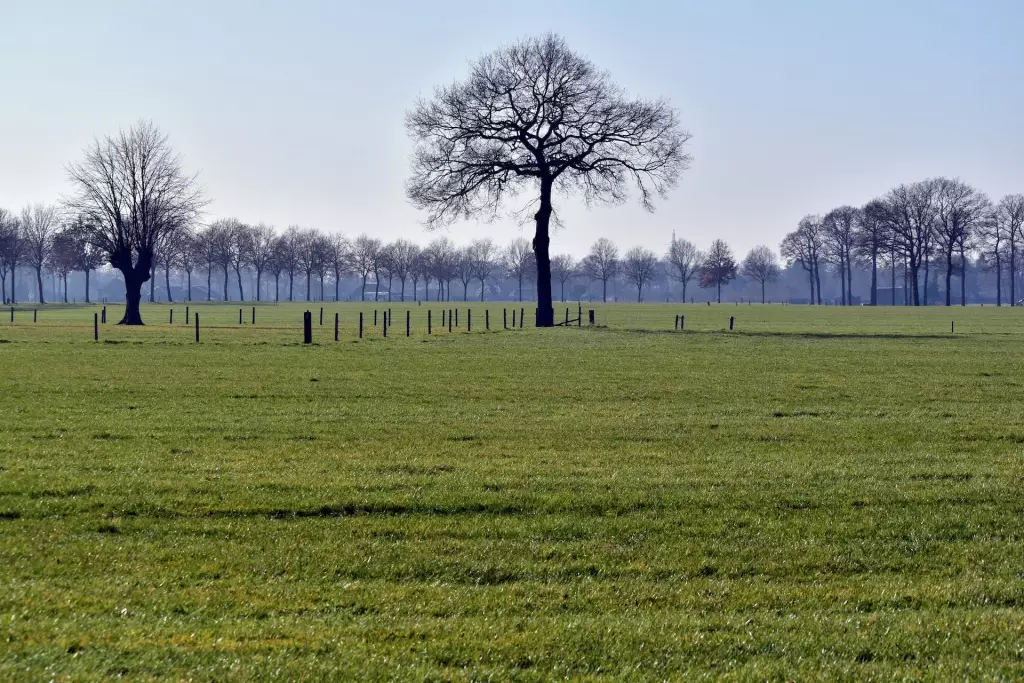Are Tree Farms Profitable? (Full 2023 Breakdown)
As the world becomes more conscious of the environment, the demand for sustainably grown products has increased. Tree farming has emerged as a viable option for those who want to contribute to the environment while also making a profit. However, as with any investment, the question remains: are tree farms profitable? In this article, we'll explore the ins and outs of tree farming and take a closer look at whether it's a profitable venture worth pursuing.
Inflation-adjusted net income from tree farming is forecast to be $167.3 billion in 2022. However, there is an expected decrease of 18.2 percent for 2023. A Christmas tree farm can have an annual revenue of $80,000 and a profit of $76,000 after 8–10 years of operation, assuming 1,000 trees are sold.
Initially, consider the costs of land, trees, and equipment, as they constitute major upfront expenses that may take years to recoup. To generate additional income streams, you may plant high-value specialty crops such as corn and soybeans, offer farm visits and workshop courses, and rent out portions of your land for events.
Summary
- In the U.S., you can rely on the American Tree Farm System (ATFS) for support, as it is the largest and oldest woodland certification organization. ATFS can provide guidance on sustainable forestry practices and help you achieve certification, adding credibility to your tree farm.
- Consider the social and environmental impact of your tree farm by providing livelihoods for people, as well as preserving the environment through sustainable practices.
- It is essential that you carefully plan your tree farm strategy by choosing the right location, tree varieties, and management practices.

On this page:
Costs and Profit Breakdown of a Tree Farm
Initial investment costs of a tree farm
| Investment Costs of a Tree Farm | Small-scale (1-5 acres) | Medium-scale (10-50 acres) | Large-scale (100-500 acres) |
|---|---|---|---|
| Land | $1,000 - $5,000 | $10,000 - $50,000 | $100,000 - $500,000 |
| Saplings (per tree) | $1 - $5 | $1 - $5 | $1 - $5 |
| Tractors | $5,000 - $20,000 | $20,000 - $50,000 | $50,000 - $100,000 |
| Watering systems | $1,000 - $5,000 | $5,000 - $10,000 | $10,000 - $20,000 |
| Pruning tools | $500 - $2,000 | $2,000 - $5,000 | $5,000 - $10,000 |
| Total start-up costs | $7,800 - $33,500 | $37,300 - $116,500 | $165,300 - $631,500 |
To start a tree farm, you'll need to account for the initial investment costs, which include purchasing land, saplings, and other essential tools and equipment. Consider the size of your farm and the type of trees you plan to cultivate, as each variety has unique requirements and costs associated with it.
Please note that these are rough estimates, and the actual costs may vary depending on several factors such as location, type of trees, market demand, and more. It's always best to consult with experts in the field and do thorough research before starting a tree farm.
Generally, land costs depend on location, and you should aim for a property with fertile soil, good drainage, and access to water sources. Keep in mind that tree saplings can vary in price depending on the species, with more popular types carrying higher price tags. Tools and equipment, such as tractors, watering systems, and pruning tools, are necessary investments to maintain and harvest trees efficiently.
Ongoing expenses of a tree farm are projected to increase
| Ongoing Expenses of a Tree Farm | Small-scale (1-5 acres) | Medium-scale (10-50 acres) | Large-scale (100-500 acres) |
|---|---|---|---|
| Labor (per hour) | $10 - $20 | $10 - $20 | $10 - $20 |
| Maintenance (per year) | $500 - $1,000 | $1,000 - $5,000 | $5,000 - $10,000 |
| Marketing (per year) | $500 - $1,000 | $1,000 - $5,000 | $5,000 - $10,000 |
| Total operational expenses | $1,300 - $2,600 | $2,300 - $10,600 | $10,300 - $20,600 |
Once your tree farm is established, you'll need to manage the recurring expenses that contribute to its overall profitability:
- Labor: Depending on your farm's size, you may need to hire seasonal or full-time laborers to help with planting, pruning, irrigation, and harvesting.
- Maintenance: Regular maintenance of equipment, irrigation infrastructure, and land, such as pest control, is crucial to ensure tree health and optimum growth.
- Marketing: Reaching out to customers, whether through advertising or attending local trade shows, is essential to selling your trees.
According to a study, in 2023, farm production expenses are projected to increase 1.3 percent from 2022 to 2023. Stay informed about changes in the market and regional factors that could affect your ongoing expenses.
Potential returns on a tree farm investment
The revenue generated from a tree farm depends on factors such as the type of trees you grow, how well they are marketed, and the price they can fetch in the market. For example, a Christmas tree farm may experience surging demand during the holiday season, translating to higher profits.
The returns on investment can vary significantly, depending on your marketing efforts, the trees' growth rates, and their quality. A successful Christmas tree farm example shared in a guide suggests an annual revenue of $80,000 and $76,000 in profit after 8–10 years of operation, assuming 1,000 trees sold. As your brand gains recognition, expanding your farm can further increase revenue.
Factors to Optimize Your Tree Farm's Profitability

Choose the right tree species
The type of trees you grow affects your farm's profitability, as different trees have varying growth rates, market demands, and maintenance requirements. Be sure to research which species are suitable for your climate, soil type, and intended market.
Location and land costs impact profitability
When selecting a location, consider factors like the availability of water, proximity to markets, and potential growth space for your trees. Land value can vary significantly, so it's essential to evaluate if the potential return on investment is in line with your initial expenses.
Effective management practices
Some vital aspects to consider:
- Irrigation: Ensuring proper water supply to your trees to encourage healthy growth.
- Pest control: Implementing measures to protect your trees from insects and diseases.
- Pruning and thinning: Regularly maintaining your trees to promote strong, marketable products.
- Harvesting and marketing: Developing a strategy for selling your trees and navigating the market fluctuation.
An Overview of Tree Farms in 2023

Current trends include diversified tree farms
In recent years, tree farming has become increasingly popular due to growing demand for sustainable timber production and the fact that almost half of U.S. forests are owned by families. The American Tree Farm System (ATFS) is the largest and oldest woodland certification program in the country, providing a wealth of opportunities for tree farming entrepreneurs like yourself.
Some key trends in the tree farming industry are:
- A focus on sustainable and eco-friendly practices
- Growth in demand for specialty trees, such as fruit, nut, or ornamental varieties
- Diversification of tree farms to include other revenue-generating activities like agrotourism, firewood sales, and Christmas tree farming
Demand and supply of trees and wood products
As a tree farmer, it's important to understand the market dynamics and where demand is likely to be strongest in 2023. Some of the factors driving demand for tree farm products include:
- Growing consumer awareness and interest in sustainable forestry products
- Population growth and increased urbanization, leading to a need for more lumber and wood products
- Climate change mitigation efforts and the role of trees in capturing carbon
On the supply side, several factors will affect tree farming in 2023, such as:
- Availability of land suitable for tree farming
- Access to financial resources and government support programs for woodland management
- Technological advancements in tree breeding, forestry management, and harvesting techniques
Benefits of Diversification in Tree Farms

Diversifying your tree farm with agroforestry practices and additional income streams can make your tree farm more resilient to changing market conditions and environmental factors, while also capitalizing on emerging opportunities in 2023 and beyond.
Agroforestry practices provide benefits
Incorporating agroforestry practices into your tree farm can provide numerous benefits. Agroforestry involves integrating trees, crops, and/or livestock systems to optimize land use and increase the overall productivity of your farm. By integrating diverse crops and tree species, you can break insect and disease cycles, reduce weeds, and improve soil structure, which can contribute to softer impacts on environmental resources.
Furthermore, these practices can help conserve soil moisture, mitigate climate risks, and increase carbon sequestration. As a result, your tree farm will be more resilient and productive in the long run. Remember to choose appropriate tree species and management practices that are well-suited to your farm's unique conditions and needs.
Additional income streams for your tree farm
Diversification of your tree farm can also generate additional income streams by exploiting profitable niche markets. By introducing new products and services, you can tap into new market segments and increase your farm's financial stability. Here are some ideas to consider:
- Planting high-value specialty crops alongside your trees to generate supplementary income
- Offering agri-tourism opportunities, such as farm visits and workshop courses
- Renting out portions of your land for recreational activities or events
When exploring new income streams, it's essential to evaluate the potential profit margins and the required investments in time and resources. This way, you can ensure that your efforts contribute to your farm's long-term success.

